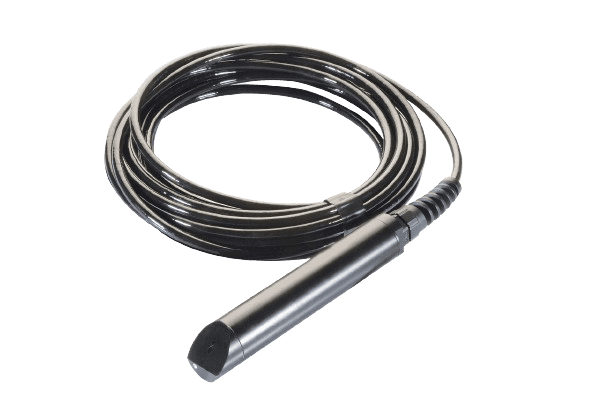
NTU sensor
Description
Aqualabo’s NTU optical turbidity probe measurement principle is based on the 90° infrared light-scattering nephelometry. A wide range of 0 to 4000 NTU, ensures accuracy in diverse water quality applications.
Advantages
- IR fiber optic technology
- Ranges from 0 to 4000 NTU (in 4 ranges and automatic ranges) or MES: 0 – 4500 mg/L
- Robust and waterproof (IP68)
HYDROCLEAN automatic cleaning option
Assets
- Open communication protocol (MODBUS RTU RS485 or SDI12)
- Sensor with very low energy consumption
Similar products
Why trust AQUALABO?
AQUALABO, a French company, offers a combination of experience, innovation, international presence, adaptability, and ecological commitment, making it a trusted partner for water quality control.
FAQ NTU sensor
How to calibrate a turbidity sensor?
Calibration of a turbidity sensor requires the use of certified formazine standards of known concentration. After the initial calibration, accuracy checks are performed by re-measuring the standards. Adjustments may be necessary, and data documentation and periodic repeat calibration are critical to maintaining reliable measurements.
How to maintain a turbidity probe?
Maintenance of a turbidity sensor is essential to ensure optimum performance. Clean the sensor regularly to remove deposits that can affect measurements. An automatic cleaning system, as offered with the LowTuS Premium version, or anti-fouling accessories such as the hydroclean for the NTU probe, can optimize cleaning frequency. Calibrate the sensor periodically with known turbidity standards. Ensure that the sensor is protected from physical shock. Record calibration data and perform periodic checks.
Are Aqualabo’s turbidity solutions suitable for portable applications?
How do the LowTuS sensor handle bubbles and deposits that may affect measurements?
The LowTuS sensor is equipped with special features, including debubbling and optional automatic cleaning systems. These features prevent interference from bubbles and deposits, ensuring accurate measurements even under difficult conditions. This design innovation increases the reliability of Aqualabo probes in providing accurate turbidity data for various applications.
What advantages does Aqualabo's digital communication feature offer?
The Modbus RS-485 and SDI-12 communication options provide seamless integration with a variety of devices, allowing for real-time data transmission. It also ensures reliable measurement by eliminating potential signal interference.

